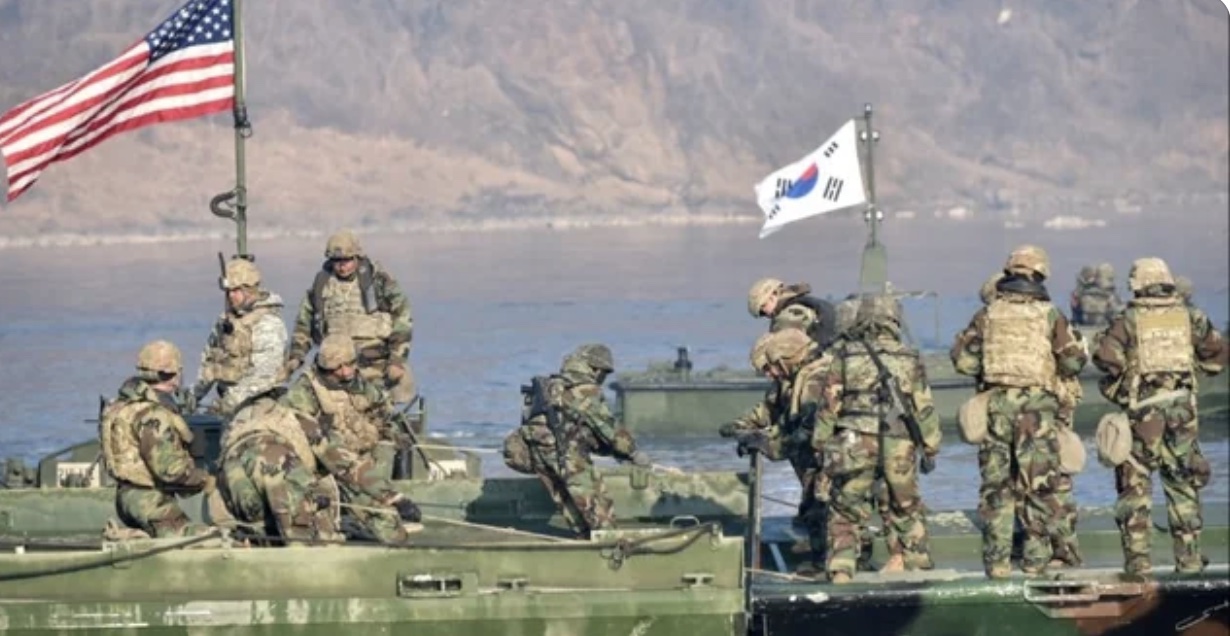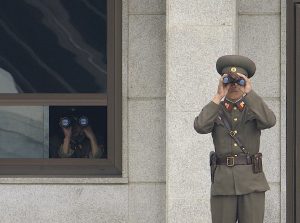


From August 18 to 28th, tens of thousands of personnel, fighter jets, artillery units, and even the latest assets from the U.S. Space Force will be woven together in a sprawling display of allied power. On the surface, it looks like routine manoeuvres. In reality, it is a blunt message to Pyongyang: the alliance remains ready, willing, and able to fight if forced.
For South Korea, the exercise is about survival. For Washington, Ulchi Freedom Shield 25 is about credibility—proof that its “ironclad” defence commitments are not mere diplomatic rhetoric but tangible military capability. Both sides understand that drills of this scale are not just about logistics or interoperability; they are theatre as well as preparation. North Korea watches every movement, every sortie, every deployment. Kim Jong Un’s propagandists will doubtless denounce UFS25 as another rehearsal for invasion. But that is precisely the point: to remind the North that its arsenal of missiles and its nuclear posturing cannot deter the combined weight of the alliance.
At the heart of UFS25 lies the doctrine of all-domain operations. Gone are the days when war on the peninsula could be imagined in terms of tanks and infantry slugging it out in the Demilitarised Zone. Modern warfare now extends across cyber networks, orbital platforms, and integrated intelligence feeds. The involvement of the U.S. Space Force is no token gesture. American Guardians will link satellite capabilities directly into the exercise’s command structures, tying together everything from logistics to strike coordination. The skies above Korea have long been a theatre of tension, but the silent arena of space is increasingly central to deterrence.
The live-fire component underscores just how seriously Seoul and Washington take the prospect of escalation. Advanced aircraft—including U.S. F-35As and carrier-borne F-35Cs—will fly alongside South Korea’s own jets in highly choreographed scenarios, testing the integration of 4th and 5th generation aircraft. The difference is more than technical. Interoperability is a political statement: two militaries, different languages and cultures, fighting as one. For adversaries, the message is stark—this alliance does not exist on paper, but in the muscle memory of pilots and soldiers who train together year after year.
That interoperability extends well beyond the battlefield. One of the unique aspects of UFS25 is its “whole-of-government” approach. Civilian agencies, ministries, and even international observers are drawn into the mix. Sweden and Switzerland, as neutral nations charged with monitoring the Armistice, will once again serve as outside referees, lending a degree of legitimacy to what might otherwise be dismissed as pure sabre-rattling. Their role reminds us that this is not just a bilateral affair. Several United Nations Command member states will contribute personnel. In effect, Ulchi Freedom Shield represents a miniature coalition—a reminder that a North Korean provocation could bring a broader international response.
Still, critics in Seoul question whether such overt displays of firepower actually increase security or merely provoke Pyongyang into further missile tests. The North has never been shy about responding in kind, often with ballistic launches timed to coincide with U.S.-ROK drills. Kim Jong Un has already vowed to “rapidly expand” his nuclear arsenal, casting every exercise as proof of Washington’s “hostile intent.” It is a familiar refrain, but one that cannot be dismissed entirely. After all, North Korea’s nuclear programme has steadily advanced despite decades of sanctions and diplomatic overtures.
Yet the alternative—cancelling or scaling back the exercises—would be worse. When drills were pared down during earlier phases of diplomacy, it emboldened the North without changing its behaviour. South Koreans know this from bitter experience. With Seoul sitting just 35 miles from the border, within easy reach of thousands of North Korean artillery tubes, complacency is a luxury it cannot afford. Exercises such as UFS25 are not about war-mongering but about ensuring readiness for a crisis that could erupt with little warning.
The timing of this year’s manoeuvres is also instructive. They come as President Lee Jae Myung seeks to balance outreach with deterrence, offering gestures of de-escalation even as the military prepares for the worst. That duality—diplomacy on one hand, firepower on the other—captures the essence of South Korea’s strategic dilemma. It must always hope for peace, but plan for conflict.
For Washington, meanwhile, the exercise carries broader implications. At a moment when American commitments are questioned in Europe and the Middle East, the Korean Peninsula serves as a test case of alliance reliability. To pull back now would not only rattle Seoul but embolden adversaries far beyond Asia. Ulchi Freedom Shield therefore serves two audiences: Kim Jong Un, who must be reminded of allied resolve, and America’s other allies, who watch closely to see if Washington will stand firm.
In the end, UFS25 is an exercise in deterrence masquerading as training. No one truly expects to fight a war exactly as rehearsed in these scenarios. But the very act of rehearsing, again and again, hardens the alliance and signals to Pyongyang that aggression would be suicidal. The irony is that the more realistic and expansive the drills become, the less likely they are ever to be put into practice.
Ulchi Freedom Shield 2025 is not a rehearsal for an invasion—it is a rehearsal to prevent one. And on the Korean Peninsula, that distinction could mean the difference between uneasy peace and catastrophic war.
______________________________________________________________________________

As South Korea and the United States embarked on their annual Ulchi Freedom Shield exercises this week, the North Korean leader visited a navy destroyer and railed against what he called the “obvious expression” of hostile intent from Seoul and Washington. He vowed to expand nuclear capabilities in the face of these “provocations”.
Nuclear weapons are not simply military assets for Pyongyang; they are political tools. Each test, each new missile launch, each boast about submarine-launched ballistic missiles is carefully calculated to remind the world that the Kim regime cannot be ignored.
______________________________________________________________________________